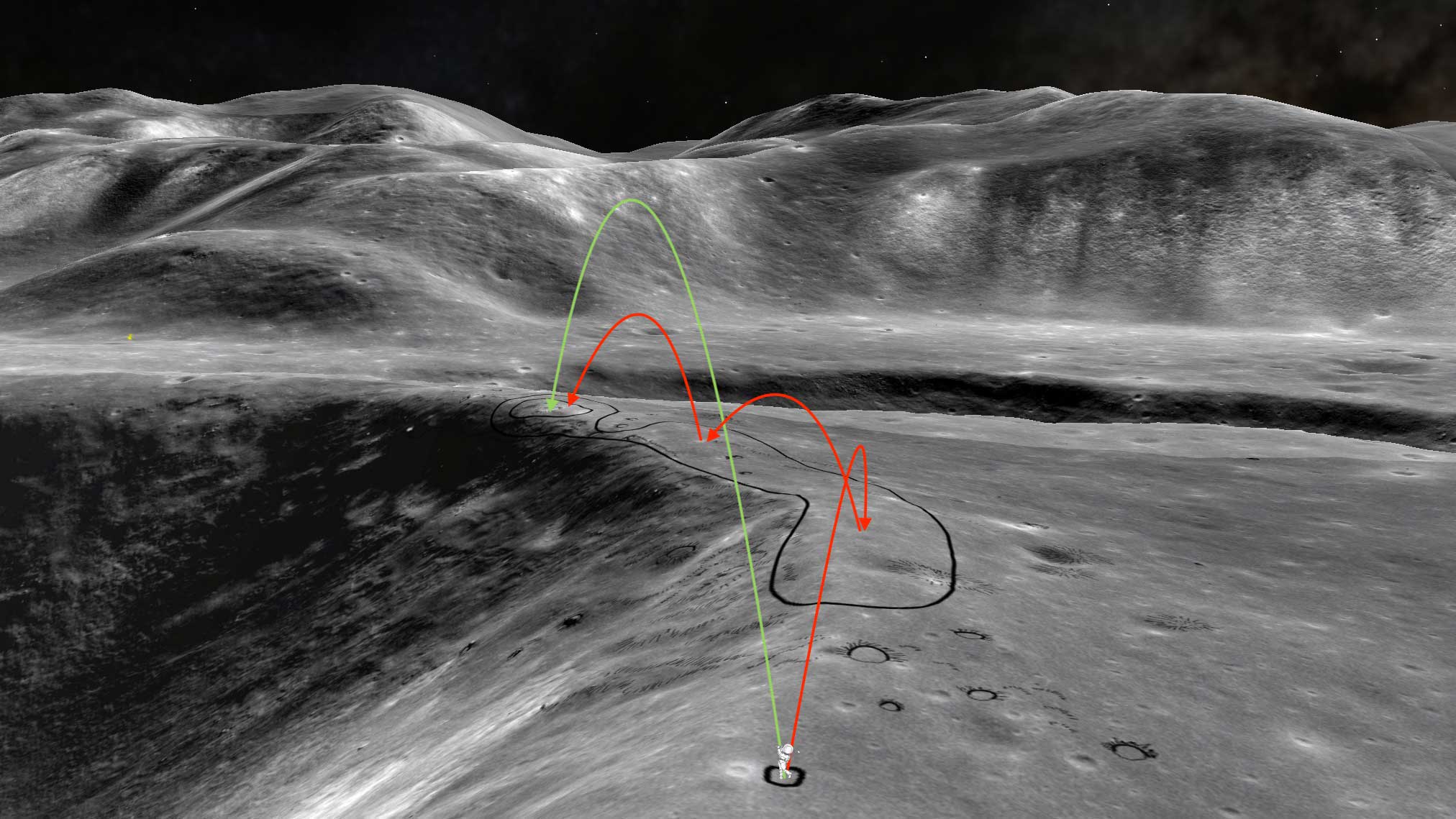Houston, we have an anniversary.
Fifty years ago this week — on Feb. 6, to be exact — astronaut Alan Shepard clambered from the capsule of Apollo 14 with a modified 6-iron in his clutches and promptly did what millions of golfers had done before him.
He duffed one.
Still, the moment was historic: It marked the first attempted golf shot on the moon. In keeping with the spirit of the game, Shepard’s peers gave him a good razzing.
“You got more dirt than ball that time,” deadpanned his space-traveling sidekick, Edgar D. Mitchell, who clearly missed his calling as a Scottish caddie.
“Looked like a slice to me, Al,” added astronaut Fred Haise, from Mission Control, in Houston, even though he surely knew that slicing (more on this later) is impossible on the moon.
Chalk it up to stiffness from the long ride to the course. Or Shepard’s cumbersome space suit. Or the fact that he was trying to swing one-handed, with a jerry-rigged iron attached to the end of a rock-sampling probe.
Whatever the case, Shepard had several sound excuses for his flub, and he rightly gave himself a mulligan.
On his redo, the ball few roughly 40 yards and settled in a crater.
Golf clap.
But Shepard wasn’t finished. Dropping a second ball, he took a third swipe.
“Miles and miles and miles,” Shepard said, as his shot sailed through the blackness.
Golfers tend to exaggerate.
Initial estimates put it at 200 yards, but new analysis from remastered photos (below) has placed it at closer to 40 yards (and his first shot at 24 yards). Whatever the distance, a half a century later Shepard’s swing remains the finest golf shot ever struck on the moon.
In large part because no one else has tried.
How come?
On the face of it, we understand why the lunar surface doesn’t get much play. Tee times are tough to land, and conditions are what you might describe as “raw,” with nothing but sandy and rocky lies.
But in other ways, the moon seems like a pretty awesome place to peg it, and not just because remote golf is all the rage.
For starters, distance!
As NASA scientist Nujoud Merancy told me the other day, the moon has one-sixth of the Earth’s gravitational pull, which makes it a fine venue for athletic exploits. If, for example, your vertical leap is three feet on Earth, it would be 18 feet on the moon.
Similarly, the equivalent of a 200-yard shot struck in an atmosphere-less environment on Earth would fly roughly six times as far on the moon: roughly 1,230 yards, Merancy said.
The earth, of course, does have an atmosphere, with air currents that help give balls lift and carry.
The moon does not, which has its own appeal, because in the absence of atmosphere, balls don’t spin off course. No snap-hooks or banana-slices. Your swing path doesn’t matter. So long as you catch it with a square club face, Merancy says, the ball flies straight.
A hacker’s heaven!
To maximize your distance on the moon, you’d want to do like Bryson and customize your clubs. According to Merancy, who, at GOLF.com’s request, did some back-of-the-scorecard calculations, the optimal driver would be one with 45-degrees of loft. If you swung such a club at 110 miles per hour, and imparted a ball speed of 165 miles per hour, the shot would carry 3,650 yards, or about two miles.
“The really tough part would be finding your ball,” Merancy said.
As the manager of NASA’s Exploration Mission Planning Office, at Johnson Space Center, in Houston, Merancy is heavily involved in the Artemis program, which is focused on sending the first woman — and the next man — back to the moon by 2024.
Maybe those astronauts will want to play a little golf.
To that end, GOLF.com consulted with another expert: the course designer Kye Goalby, whose credits include the recent renovation at Old Warson, in St. Louis, and the redo of Saratoga Golf and Polo Club, in New York. He also just signed on as co-designer, with Tom Doak and Zac Blair, of The Tree Farm, Blair’s course-in-the-works in South Carolina.
Good sport that he is, Goalby agreed to help us really grow the game by designing a hole on the moon. With graphic design work by Tommy Naccarato, of Hanse Golf Design, here are the results:
A 4,000-yard par-5 might sound like a beast. But on the moon, where a big-knocker could blast a tee shot upward of 2 miles, it’s an eagle opportunity.
Like all fine designs, this artful dogleg left, set in the shadow of a lunar range known as the Apennine Mountains, offers strategic options. From the lone tee box (“we’re not getting a lot of play up here, so we can get by with just one tee,” Goalby said), the bold play is to take on the crater and try to drive the green, an as-the-crow-flies shot of 3,104 yards.
The good news is, “it’s only 3,000 yards to carry the crater,” Goalby said.
The more conservative tack is to approach the hole as a three-shotter. An 1,800-yard drive puts you in good position for a layup of about 1,200 yards, just in front of the cross-craters. (A 70-yard-wide fairway makes for a relatively friendly target on the moon, where the absence of an atmosphere makes it impossible to slice.)
From there, it’s roughly 340 yards to the center of the punchbowl green, an easy reach with a pitching wedge. Of the punchbowl, Goalby said, “Since we don’t have to worry about drainage issues, this is a good opportunity for one.”
One of the defining features of golf on the moon is the absence of bunkers, because, as Goalby noted, everything is a bunker.
And nothing is water. One sleeve of balls should be plenty.
